Flea beetles are a common early season pest of spring canola. Both crucifer and striped flea beetle are very common and are observed in Ontario every year. Flea beetle feeding causes leaf area loss that may result in plant death during seedling stages. Canola should be monitored for flea beetle activity from the time of emergence up to the 4-leaf stage.
Identification
The striped flea beetle is approximately 1.5 mm long and has two cream- to amber-coloured stripes along its back. The crucifer flea beetle is bluish-black, 1.5 mm long and does not have stripes. Flea beetles have enlarged hind legs which they use to jump when disturbed, hence their name. The larvae are white, approximately 3 mm in length and have brownish heads.
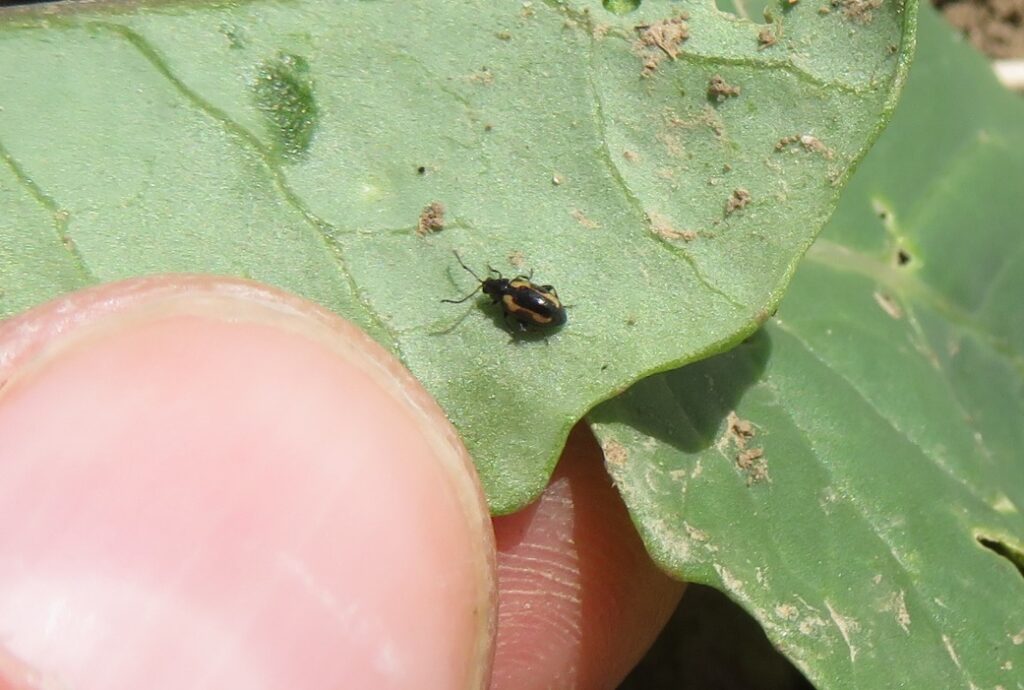
Figure 1. Striped flea beetle adult.

Figure 2. Striped and crucifer flea beetles are commonly found together in Ontario.
Life Cycle
There is one generation per year. The adult beetle overwinters in sheltered areas such as woodlots under leaf litter. Adults emerge in late April once soil temperatures reach 10°C–15°C. The striped flea beetle emerges 1–4 weeks before the crucifer flea beetle. Eggs are laid on the soil surface close to the base of host plants in May and June. Young larvae hatch and feed on the roots (rarely economical damage) for approximately 1 month before pupating. First generation adults emerge in early August and feed on canola until late October before moving to their overwintering sites. Beetles can fly as far as 1 km away to find their preferred host plants when winds are calm.
Crop Damage
The greatest damage is done by adults and is most severe during the initial 3 weeks following crop emergence. Spring adults feed on the leaves of young seedlings, causing a shot-hole appearance. Leaves and plants eventually wilt and die. Stands become thinned, and plants may become stunted. Once the crop reaches the 4-leaf stage, the crop can withstand the injury.
First generation adults feed on the surface of pods, resulting in shriveled seed, increased pod diseases and increased shattering. Water can enter damaged pods, leading to sprouting.
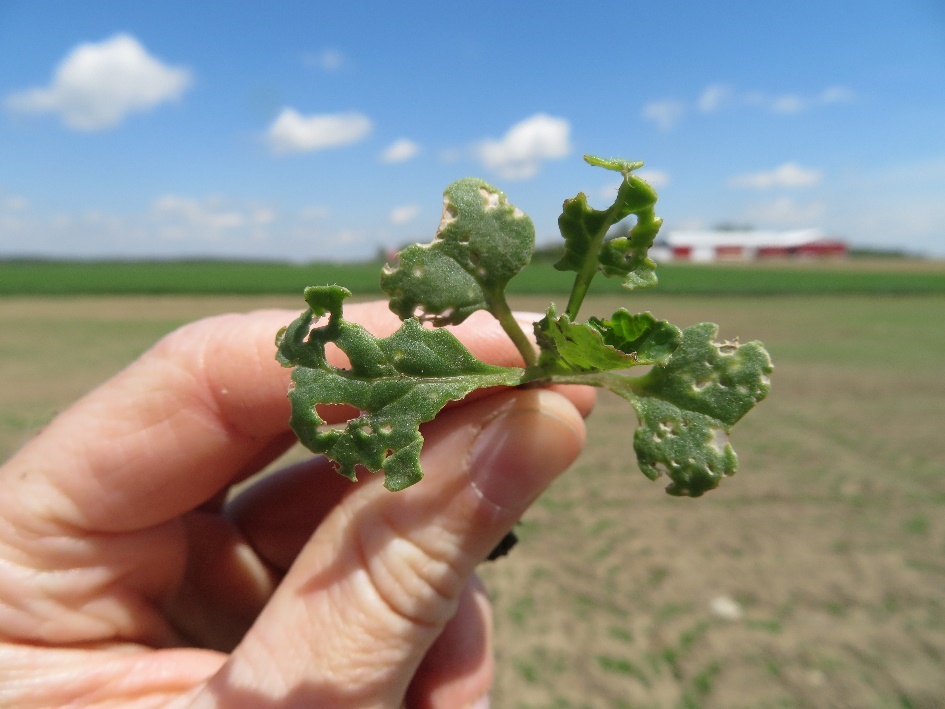
Figure 3. Flea beetle feeding injury on a canola seedling.
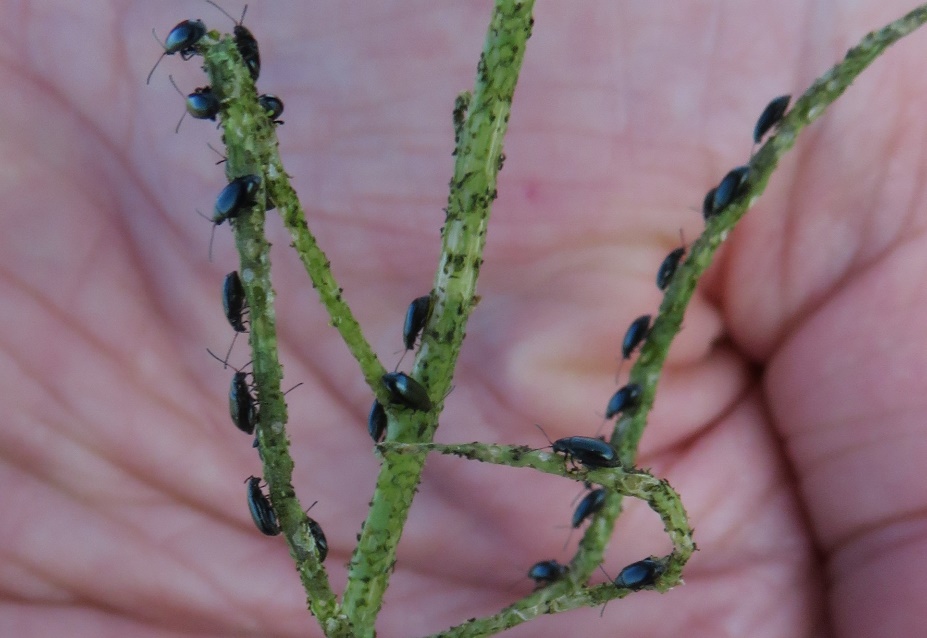
Figure 4. Crucifer flea beetle feeding on canola pods late in the season.

Figure 5. Pod damage caused by flea beetle.
Scouting
Risk is higher following warm open falls and mild winters and/or with ample snow cover. Warm springs increase adult mobility and seedling feeding. If conditions become cool or windy after adults emerge in spring, feeding may slow down but will continue and there may be an increase in stem feeding.
Scout newly emerged canola fields every 2 days, especially along border rows, for the migration of overwintering adults from the fencerows and woodlots. Yellow sticky traps can be used at the field’s edge to detect adult presence, but field scouting is still required. Assess 10 plants in five locations across the field for feeding damage. Monitor fields closely for shot-hole feeding injury until the plants are past the 4-leaf stage. Determine the average percentage of defoliation occurring and the amount of stem damage.
Hot, sunny, dry weather promotes pod feeding injury. During the pod stages, especially in hot dry years, assess 10 plants in five locations of the field for pod feeding and adult activity.
Threshold
Control is warranted when defoliation reaches 25% between the cotyledon stage and the 4-leaf stage and adults are still actively feeding. If adults are feeding on the seedling stems action may be necessary before 25% defoliation is reached; chewing through a stem can kill the plant. Once the crop reaches the 4-leaf stage, the plants are generally able outgrow the feeding and compensate for the feeding injury.
For first generation adults during pod stages, in hot, dry years, if 50 or more adults are found per plant and they are actively feeding on the pods, a control may be warranted. Typically, pod feeding is only found in small areas of the field. Check the pre-harvest interval on insecticide labels before treating the crop.
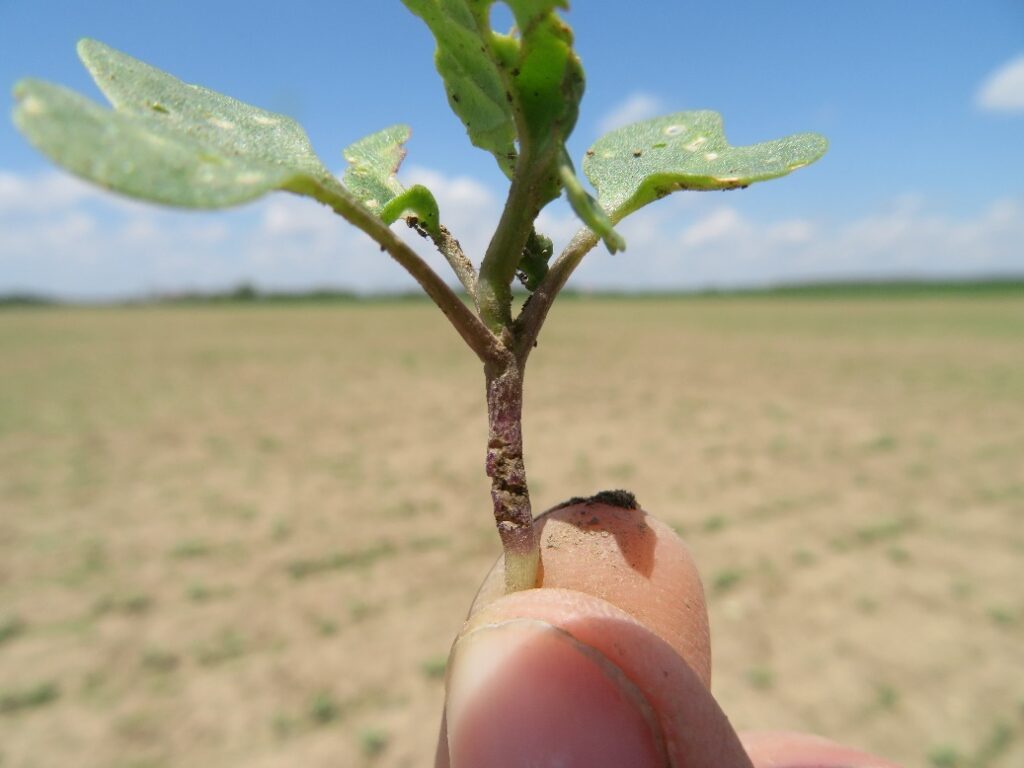
Figure 6. Stem feeding injury on a seedling caused by flea beetle.
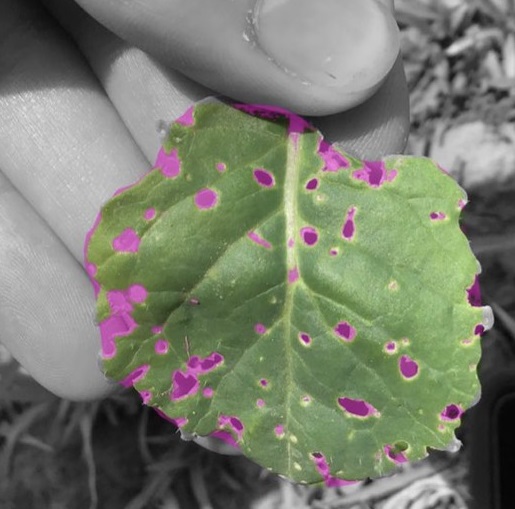
Figure 7. Percent leaf injury can be difficult to estimate. This leaf has 11% injury highlighted in pink using the app Xarvio.
Management with Insecticides
Insecticide seed treatments are necessary at planting time to control flea beetles due to the difficulty of predicting their populations. The insects must feed on the plants to ingest the insecticide, so some feeding injury will be observed even when seed treatments are providing adequate control. Seed treatments protect plants for 3 or 4 weeks from the time of seeding, although different insecticides may differ in the length of flea beetle control.
A foliar application of insecticide may still be required should adult activity continue and reach threshold after the seed treatments are no longer effective. Find information on insecticides for the control of flea beetle on the Crop Protection Hub.
Cultural Management Strategies
Control weeds, especially those from the Brassica family, before planting (e.g., wild mustard, volunteer canola, flixweed, pennycress, field pennycress and stinkweed).
Plant into good soil conditions that promote rapid plant growth and good stand establishment. Planting into cold soils can result in slow plant growth which may give flea beetles more time to feed during early growth stages.
Overseeding can compensate for some stand loss. If a canola field has low emergence rates or a population of 50 plants/m2 or less, monitor the field closely to ensure flea beetle feeding does not result in an unacceptably thin stand. If the crop is less healthy because of other stresses, such as nutrient deficiency, wet soils, or frost damage it may have a reduced ability to outgrow or get ahead of flea beetle injury. Likewise, if a field sustains significant flea beetle damage and is slow to grow beyond the 4-leaf stage it may be more susceptible to injury from other insects such as swede midge.